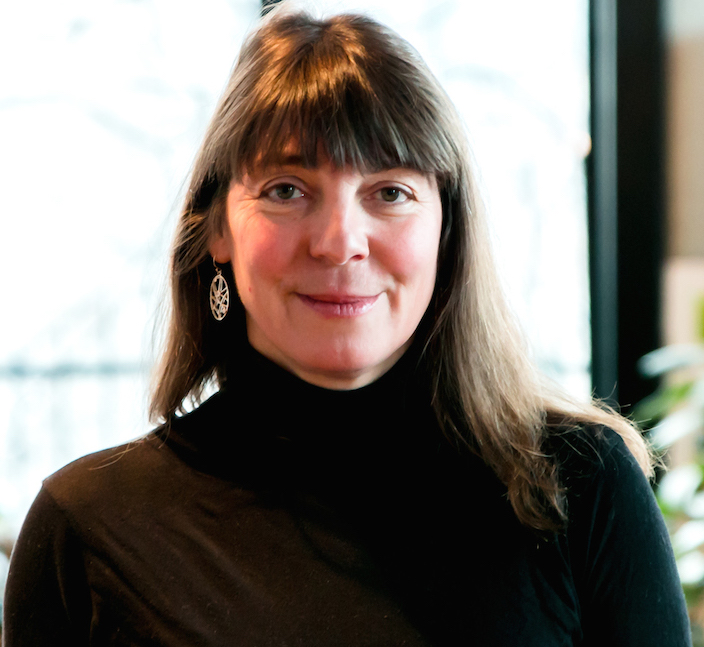By Samantha Slade for Enlivening Edge Magazine
An exploration into fresh and equitable approaches to pay

How can compensation systems embody the values and culture of an organization? How might we take into account the relational aspect in financial distribution? What does it take for compensation to feel fair?
Questioning traditional compensation systems and assumptions is about addressing systemic inequities and dealing with the organizational challenges that are spurring the Great Resignation. It is also about trying to take new economic theory such as Kate Raworth’s Doughnut Economics into practice.
Percolab is a horizontal employee-owned business that functions as a lab for what an organisation might be. We developed a compensation model in 2015 and have been living it and adjusting it since then, with great success.
In this article I will walk you through the steps of our model. It still feels powerful, revolutionary and transformative. If you want to know more about the process that brought us to this model, checkout my 2017 article: What is the pay system you dream of? Beyond the taboo of money.
Before I jump in I want to clarify that our model maps on to all seven of the “New Pay Dimensions”. These are 7 compensation reference points from the New Pay Report, based on ground-breaking research on pay and compensation. I encourage you to check out the report.

Our Percolab model, called Compensation as Conversation is built on the values of caring and fairness. As you might expect, it begins with a budget. We function per project and each project has an outward facing budget agreed with the client and an inward facing budget to clarify distribution. There are 5 standard elements, all fully transparent:
- Project expenses: Vary per project.
- Company percentage: A fixed percentage for running the business
- Commission percentage: A variable percentage depending on the work investment to obtain a contract and budget.
- Project management percentage: A variable percentage usually between 5–10% of the budget, depending on the project complexity.
- Project contributions: The remaining amount is distributed to the project team to compensate for the different contributions.
An employee can gain salary from a mix of commission, project management and project contributions. The project manager is responsible for setting up the internal budget and ideally has a proposal for the first four budget elements ready for the distribution exercise. As in every step of this process, the project manager does not have decision-making authority, everything is collectively agreed with the project team. Their role is to do all the preparation work so the distribution process can be smooth and efficient.
When it is time for the distribution process, the project manager convenes a compensation conversation with the project team. The purpose of this conversation is threefold:
- distribute the finances,
- close the project, and
- care for the relationships.
It is usually a 15–60-minute session (depending on the complexity of the project) with the following 5 steps.
First: Check-in: Begin with a check-in to land together in the project in an appreciative way. For example: What did you appreciate about this project? How did this project help you grow? Each person shares and everyone silently listens. No comments or conversation, just a go-around, with some active listening of each other.
Second: Agree on wider project percentages: Share the proposed percentages for the commission and project management and ask “Can everyone live with these?” If there is hesitation, then it is important to take a moment for clarifications and a round of reactions, and perhaps an adjustment. It is essential to have alignment before proceeding. Remember this is not about convincing people, but getting better at explaining our rationale.
Third: Clarify who did what: Reconnect with all that happened in the project using a shared language of 5 types of contributions for each task or step: (i) holding (when you “got this”, others are relying on you, from the details to the big picture) (ii) doing, (iii) learning, (iv) coaching, (v) no contribution. The project lead lists the key steps of the project in a table and offers a moment of silence for each person to clarify their contribution at each phase, by filling in the table themselves.
Then take a moment to look at it and ask any clarifying questions to one another. Take a moment to share any reactions. This is important, everyone has a turn and practice speaking bravely and authentically! Take a moment to make any necessary adjustments. This gives a collective view of contributions, and offers space for differing perceptions to surface and be aired. There is no need to resolve differing perspectives, just that people hear one another.
Fourth: Agree on contribution values: This is the fun part. Each person has 100% to distribute to all the people who will be receiving money for this project. We don’t just calculate for ourselves, but for everyone, in silence, on paper, privately. When everyone is done, we put down our pens, and one by one we share our numbers and explain the underlying logic as best we can.
It’s important to acknowledge that this will most likely be uncomfortable and that there will be an adjustment round if required. It’s important for people to resist changing their numbers during this sharing. The project lead records all the numbers in the spreadsheet, and the average of everyone’s numbers is calculated. The project lead asks the following question: Can we live with the average of these numbers or would anyone need to do another round?
If even one person asks for another round, then another round takes place. Again, in silence, privately, on paper everyone distributes the 100% for a second time, with greater awareness now. Again, pens down, numbers are shared, and the project lead records the numbers and the average. The same question is asked again. (On the rare occasion there is need for more it is time for a little circle dialogue before a third round.) From these percentages the final actual contribution amounts are calculated.
Fifth: Check-out. Close with presence and heart and in a way that ensures that the relational field has been tended to with the question: Are you ready to start a new project with this exact same team after this conversation? If you are unable to say YES, is there something else you need?

Each project is unique and might require a bit of process adjustment such as agreeing on wider project percentages at the beginning of the project or running the distribution process each month. This is about the overall principles rather than being dogmatic.
The first time someone lives the process they usually experience a dose of inner turmoil as their individualism focused negotiating habits get challenged by the collective care culture. After 3–4 times they settle into the system, and learn to trust in it and their colleagues. They give up trying to find the perfect percentage and accept that fairness is a nebulous, changing concept.
“The taboo against talking about salary and specific bonuses and salaries in the workplace setting does do damage to those who are being penalized based on stereotypes,” says Jodi R. R. Smith in the Forbe’s article The Money Taboo: Why It Exists, Who It Benefits, And How To Navigate It
At Percolab, our monthly salary is the sum of all our compensation conversations, that we each manage as we see fit, sometimes taking it all at once, sometimes spreading the amounts across months. We can see each other’s salaries and we all feel better when everyone is within their earning range.
I can’t begin to explain the liberating feeling of so much autonomy and care this process brings. It is not perfect, it can never be, we are still dealing with issues of informal power, finding our voice and things of the like. However, this approach does feel more holistic, relational, and aspirational than anything I have ever experienced. With it we are walking the bumpy pathway to a more equitable world.
— — — — —
For further examples of self-set salary approaches see overview article from Corporate Rebels.
To go deeper into this field here here are a few of our favorite references: Doughnut Economics by Kate Raworth, Indigenomics: Taking a Seat at the Economic Table by Carol Anne Hilton, Schmucher Centre of New Economics, Well-being Economy Alliance, Solidarity Economics.
Big thank you to Percolab colleagues and community for input and support for this article. Visit Percolab to stay tuned on upcoming courses such as Practical Conscious Economics for the Workplace: Bridging Emerging Economic Theory, Worldviews and Practical Actions.
 Samantha is a collaboration and collective governance strategist and capacity builder. Over a decade ago, she cofounded Percolab, an international network of self-managed cooperatives working in system change. Percolab support courageous organizations and ecosystems to embody their values and vision, in service of the socio-ecological transition.
Samantha is a collaboration and collective governance strategist and capacity builder. Over a decade ago, she cofounded Percolab, an international network of self-managed cooperatives working in system change. Percolab support courageous organizations and ecosystems to embody their values and vision, in service of the socio-ecological transition.
As an organization transformation lab, Percolab experiments and grows practices of new economics, distributed governance, and shared leadership. Much of it builds on the foundational work of Samantha’s book Going Horizontal. (Berrett-Koehler Publishers) and TedX The Future is in Business as Commons, which have become a reference in the self-management movement.
Featured Image by Nattanan Kanchanaprat from Pixabay




